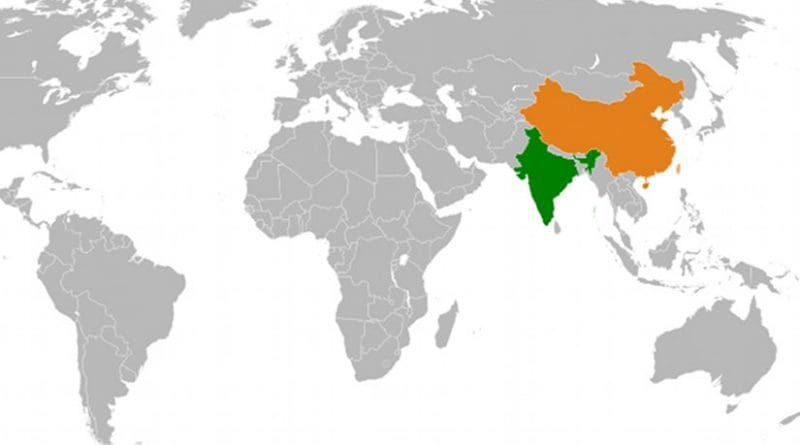Wang Yi In India: Context And Significance – Analysis
By IPCS
By Manish Dabhade*
The Chinese Foreign Minister, Wang Yi, is on a three day visit to India from 12-4 August, 2016. This visit is significant for numerous reasons. First, it is largely about the September 2016 G20 Summit, scheduled to take place in China and the October 2016 BRICS Summit, scheduled to take place in India. Indian Prime Minister Narendra Modi and Chinese President Xi Jinping will meet during both events.
However, it is the backdrop of the visit that has drawn increased national and global attention. From the Indian perspective, important matters include the June 2016 Nuclear Suppliers Group (NSG) meeting that took place in Seoul, South Korea, during which China blocked India’s membership to the Group on procedural grounds; the recent Chinese incursions in Uttarakhand; and repeated Chinese veto on a UN ban on Masood Azhar, the chief of the Pakistan-based terrorist group, Jaish-e-Mohammed. From the Chinese perspective, important matters include its concerns regarding India’s position on the South China Sea issue, especially after the July 2016 ruling by the Arbitral Tribunal that rejected China’s historical claims on the territory. In fact, one of China’s primary agendas at the next few multilateral settings is to prevent any endorsing of the tribunal decision.
Other important irritants have been the recent non-renewal of Indian visas to three Chinese journalists. That Prime Minister Modi will be stopping over in Vietnam en route to China for the G20 summit has also worried Beijing as it sees it as a sign of India’s readiness to join the encirclement of China as led by the US.
In the light of the aforementioned issues in the India-China relationship, the spokesperson of the Chinese Foreign Ministry highlighted that during this visit, Beijing would try to identify ways to carry forward the consensus reached by President Xi and Prime Minister Modi. Xi’s 2014 India visit followed by Modi’s 2015 China visit surely marked a sincere attempt by both sides to develop a strong relationship based on personal chemistry as well. But the NSG bid again proved the limits of personalised diplomacy.
Vis-a-vis the economic aspects of relations, though China is now India’s largest trading partner, there has reportedly been a drop in Indian exports to China in 2016, which has triggered alarm bells in India, especially when the Modi government sees Make in India as its priority policy. This is in addition to the ever widening trade deficit bending in China’s favour that both have already pledged to resolve. India feels the discriminatory tariff regime in China is hampering its exports while the latter sees business visa procedures as time consuming and a big hurdle to increasing bilateral trade. There also seems to be a Chinese attempt to use this to warn India that it should worry more about falling exports rather than the South China Sea issue, as pointed out in recent state media reports and analyses. Some reports went on to further state that India should not add another irritant that might affect its bilateral ties and will lead to “side effects.”
What is actually taking place between India and China is that although economic partnership is actively flourishing, it is at the political and strategic levels that difficulties in finding common grounds are being felt. This is despite the increased interactions at the highest levels from both sides. The principal reason for this is that India has always viewed China through the lens of its ever growing political-economic-military alliance with Pakistan aimed at countering India, coupled with the unresolved border dispute since the 1962 war. That China remains unwilling to accept India’s global rise and rightful place in various international institutions seems to be proven by the former’s refusal to endorse membership of either the UN Security Council or the NSG. Conversely, Beijing now views New Delhi’s courting of the US, and of other powers in China’s periphery, such as Vietnam, as being aimed at containing and countering China.
Though this game and counter-game seems natural, it assumes greater value and high voltage for numerous reasons. On a wider global level, the gravity of power has again shifted from Europe to Asia in the past few decades, making India and China the key, and major powers in our continent. Increasing globalisation and economic integration witnessed by all have further complicated all power calculations.
We must not forget that China remains the principal trading partner for many states – including the US, India and Vietnam – that seek to oppose it in the strategic arena.
In this regard, many analysts have already predicted that Europe’s past dotted by many wars of nationalism would all likely be Asia’s future. However, this should not allow us to resign ourselves to this fate. Diplomacy provides a meaningful, purposeful instrument to manage and resolve these conflicts and develop a better, peaceful future in Asia. An economic and strategic dialogue on the lines of US and China could be a way forward for India and China.
* Manish Dabhade
Assistant Professor, School of International Studies, Jawaharlal Nehru University, New Delhi
Email: [email protected]

